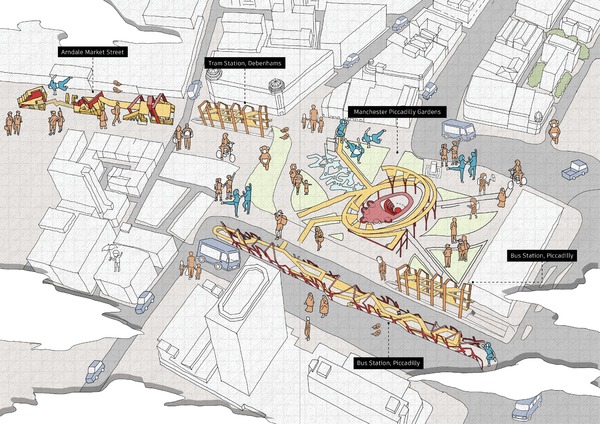Dance, Body and Architecture
The project focuses on people's axis of movement in Manchester Piccadilly Gardens and whether it meet the needs of the diverse populations in Manchester to promote social integration and inclusivity through dance and music. Besides that, “Dance , Body and Architecture” also explore on the whether certain designs of public interventions may or may not dictate people's movement and flow of the crowd in Manchester Piccadilly Gardens. One of the most interesting elements that are applied in the project is the usage of six (6) Keys of Dynamism in dance to create new architectural language through the lens of a dancer. A few patterns has been derived from the rhytms of choreographies translated into urban planning while complimenting the existing programme in the context. Through dance, the project also traverse into the culturally diverse community, behaviour of people with multiple spectrums of social anxiety in public spaces, and body dysmorphia faced by certain individuals who adheres to certain beauty standards.
“Dance, Body and Architecture” suggests multiple improvements to the current condition of Manchester Piccadilly gardens, which includes cohesive visual connections in public spaces, having all-including accessibility for people with disability, and creating some sort freedom of circulations and activities. Above all, the design should apply the concept of affordances in public spaces, whereby the quality or property of an object or a space within the Manchester Piccadilly gardens should define its possible uses, to help improve creativity of the public. Supplementary study includes determining visitors’ and locals’ ethnography to find out how diverse are the visitors via regular participatory observations and a few interviews with identified dancers from different backgrounds.


